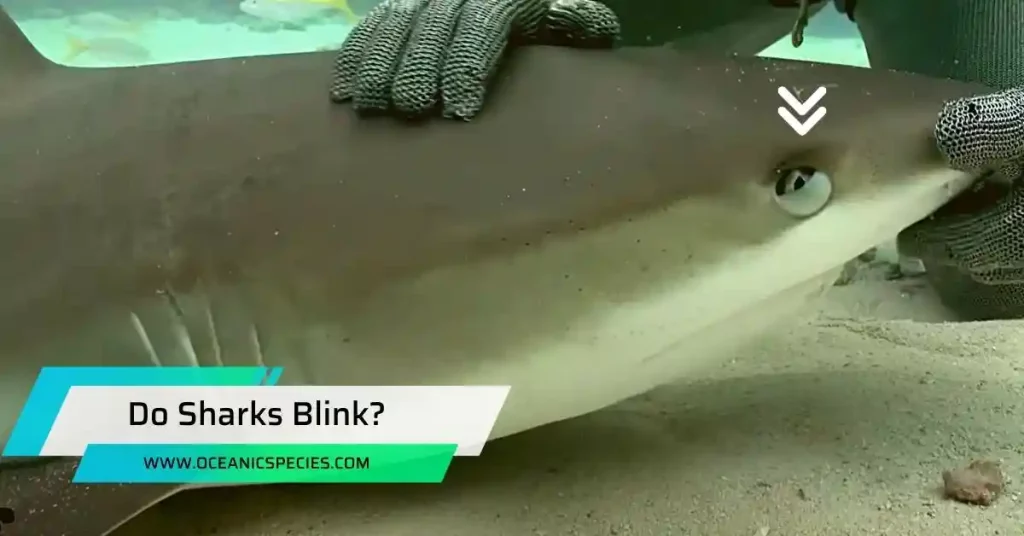Sharks communicate using a variety of body movements, postures, and chemical signals. They also rely on electrical signals to interact with other sharks and detect prey.
Within the ocean ecosystem, sharks use these communication methods to defend their territory, attract mates, and signal dominance or submission. By understanding how sharks communicate, researchers can gain valuable insights into their behavior and social structures. This knowledge can also help with conservation efforts and management strategies to protect these important predators.
With their unique communication abilities, sharks play a vital role in maintaining the balance of marine ecosystems. They are truly fascinating creatures that continue to intrigue scientists and nature enthusiasts alike.
Read the rest to explore more interesting facts.
Sharks Use Body Language To Communicate
Sharks don’t communicate much through sounds like dolphins or whales do. Instead, they mostly rely on body language to convey their messages.
Let’s delve deeper into how sharks use body language to communicate.
Visual Cues For Communication:
Sharks have a vast array of visual cues that they use to communicate with one another. Here are some key visual cues:
- Body posture: Sharks can communicate their intentions through their posture. For example, an arched back and lowered pectoral fins can signal aggression, while a relaxed posture with fins held close to the body indicates a peaceful intent.
- Tail movements: The movement of a shark’s tail can convey various messages. Rapid side-to-side movements suggest aggression, while slow sweeping motions indicate a less threatening stance.
- Eye expressions: Sharks use their eyes to communicate as well. Dilated pupils can signify excitement or aggression, while constricted pupils indicate calmness.
Demonstrating Dominance:

Sharks have a hierarchical structure within their species, and they maintain dominance through certain behaviors:
- Jaw popping: When a dominant shark wants to assert its authority, it may engage in jaw popping. This involves opening and closing their mouths quickly, making a popping sound. It shows other sharks who are in charge.
- Head thrusts: By forcefully thrusting their heads forward, sharks can establish their dominance over others. They demonstrate their physical strength and willingness to defend their territory.
Agonistic Displays:
Agonistic displays are behaviors used by sharks in aggressive encounters. These displays aim to intimidate and deter potential rivals. Here are some common agonistic displays:
- Tail slashing: Sharks will vigorously thrash their tails from side to side. This motion creates water disturbances and can intimidate other sharks or potential threats.
- Charging: Sharks might swim rapidly toward another individual to show dominance or claim territory. This aggressive maneuver is usually enough to deter rivals without actual physical contact.
Courtship And Mating Rituals:
Sharks also use body language during courtship and mating rituals:
- Nuzzling: During courtship, sharks may nuzzle or touch each other’s bodies gently. This behavior establishes a connection and helps them determine if they are compatible mates.
- Parallel swimming: Sharks engaged in courtship will often swim side by side, emphasizing their synchronicity. This synchronized swimming indicates their readiness to mate.
Electroreception And Its Role In Shark Communication
Sharks have unique ways of communicating with each other. One such method is through electroreception, which plays a crucial role in their communication system.
Let’s dive deeper into this interesting aspect of shark communication.
How Do Sharks Use Electroreception?
Sharks possess a specialized sense called electroreception, which allows them to detect electrical fields. They have special organs called ampullae of Lorenzini, which are tiny jelly-filled pores located on their snouts and heads. These ampullae are highly sensitive to electrical fields generated by other animals, including prey and potential mates.

When an animal moves, it generates tiny electrical currents that sharks can sense using their ampullae. Sharks use this ability to locate and navigate through their environment, find prey, and even communicate with other sharks.
Electroreception And Social Interactions
Sharks use electroreception as a form of long-distance communication with other individuals of their species. They can detect the weak electrical fields generated by nearby sharks, allowing them to determine the presence and direction of others. This ability is especially important during mating season when male and female sharks need to find each other for reproduction.
Sharks can also use electroreception to assess the size, sex, and health of potential mates. Additionally, sharks may use electroreception to establish dominance hierarchies within their social groups.
Electroreception And Hunting
Electroreception is a valuable tool for sharks when it comes to hunting and locating prey. Sharks can detect the electrical fields produced by the muscle contractions of their prey. This ability allows them to sense hidden or buried prey, even in dark or murky waters where other senses may be less effective.
By honing in on the electrical signals emitted by their prey, sharks can more efficiently locate and capture their next meal. This gives them a competitive edge in their marine environment.
The Significance Of Electroreception In Shark Communication
- Electroreception plays a vital role in the intricate web of shark communication.
- It allows sharks to navigate their environment, find prey, and locate potential mates.
- The ability to detect electrical fields helps sharks establish social hierarchies and communicate with other members of their species.
- By leveraging electroreception, sharks have developed a sophisticated communication system that aids in their survival and reproduction.
Different Types Of Sounds Sharks Make And Their Potential Meanings
Sharks use various types of sounds to convey messages and establish social interactions within their species. In this section, we will explore the.
Vocalizations In Sharks:
Sharks are known for their ability to produce a wide range of vocalizations, which play a crucial role in their communication. Here are the key points about the vocalizations of sharks:
- Clicking sounds: Sharks produce distinct clicking sounds by using their jaws and teeth. These clicks are often short and rapid, serving as a form of underwater communication.
- Frequency variation: The frequency and pattern of the clicks can vary, indicating different meanings. For example, a rapid series of clicks might signify aggression or territoriality, while slower clicks may convey curiosity or courtship.
- Echolocation: Sharks also use clicking sounds for echolocation purposes. By emitting clicks and analyzing the echoes, they can determine the distance and location of objects in their surroundings.
Body Language Of Sharks:
Apart from vocalizations, sharks rely on their body language to communicate. Here are the key points regarding the body language of sharks:
- Tail slapping: Sharks may use their powerful tails to create loud slapping sounds on the water’s surface. This behavior is often associated with aggression or warning signals, indicating their presence in the area.
- Body postures: Sharks employ various body postures to communicate their intentions and establish dominance. A hunched or arched back can convey aggression, while a relaxed posture may indicate submission or a peaceful interaction.
- Fins movements: Different movements of their dorsal and pectoral fins contribute to their communication repertoire. Raised fins can signify aggression, while submissive sharks lower their fins to demonstrate non-threatening behavior.
Pheromones And Chemical Signals:
In addition to vocalizations and body language, sharks use pheromones and chemical signals to communicate with one another. Here are the key points to know about this form of communication:
- Pheromones: Sharks release pheromones into the water to transmit information about their reproductive state, dominance, and social hierarchy. These chemical signals can attract potential mates or warn others of their presence.
- Olfactory communication: Sharks have a highly developed sense of smell, allowing them to detect and interpret the chemical cues present in the water. By analyzing these scents, they can gather important information about potential threats or opportunities.
Chemical Signals And Their Role In Shark Communication
Sharks’ communication methods are full of mystery. In this section, we’ll delve into the world of chemical signals and explore their role in shark communication.
Chemical Signals: A Gateway To Communication
Sharks have a remarkable ability to communicate through chemical signals, which play a crucial role in their social interactions and behaviors. These chemical signals, also known as pheromones, are released by sharks into the surrounding water.
Pheromones can convey a wealth of information, including mating readiness, territorial boundaries, and warnings of danger.
Sharks have specialized sensory organs called ampullae of Lorenzini, which allow them to detect these chemical signals with incredible precision. The ampullae of Lorenzini are like a finely tuned radar system, enabling sharks to interpret the chemical messages from their counterparts.
Significance Of Chemical Signals In Shark Communication
- Mating: Pheromones released by female sharks during their reproductive cycle attract potential mates from a distance, enabling successful reproduction.
- Territorial behavior: Sharks use chemical signals to mark their territories, thereby establishing boundaries and preventing conflicts with other sharks.
- Aggression and defense: In situations of potential threat or dominance, sharks release chemical signals that serve as warnings to rivals, signaling their presence and intentions.
- Alarm signals: Sharks are known to release alarm pheromones when injured, signaling nearby sharks to approach the injured individual or be cautious in the presence of potential danger.
- Schooling behavior: Chemical signals play a role in coordinating the movement and behavior of sharks within a school, helping them navigate and hunt more effectively.
Shark Communication In Relation To Human Encounters

Sharks’ method of communication, which plays a crucial role in their interactions with humans. Understanding how sharks communicate can aid in minimizing potential conflicts and ensuring the safety of both sharks and humans. Here are some key points to consider:
- Visual cues: Sharks communicate through various visual signals, which can provide valuable insights into their intentions and mood. These cues include body postures, tail movements, and changes in coloration. For example, a rigid posture and sharp movements may indicate aggression or a defensive stance, while a relaxed and fluid motion suggests a calm state.
- Chemical messaging: Sharks have an exquisite sense of smell and utilize chemical signals, known as pheromones, to communicate with one another. These chemical cues can convey information about reproductive status, territory boundaries, and even warning signs. While their sense of smell is highly developed, it is important to note that human scents may not be as easily recognized or interpreted by sharks.
- Electric fields: Sharks possess specialized sensory organs called ampullae of Lorenzini, which can detect the electrical fields produced by living organisms. These fields are created by the natural electrical activity in the muscles and nerves of animals, including humans. By sensing these electric fields, sharks can identify potential prey, mates, or threats in their environment.
- Vocalizations: Contrary to popular belief, sharks are not silent creatures. They produce various types of vocalizations, though some are beyond the range of human hearing. Sharks can emit low-frequency sounds, such as growls and pops, which travel long distances underwater. These vocalizations likely serve communication purposes, although their exact meanings and functions are still not fully understood.
- Behavioral signaling: Shark behavior itself can also convey messages to humans. For instance, repeated circling, fast approaches or aggressive displays could indicate territoriality or a defensive response. Conversely, calm and non-threatening behavior, such as slow swimming or maintaining a distance, may signify a lack of interest in interacting with humans.
How Sharks Communicate Within Their Social Groups
Sharks are known for their powerful presence in the ocean and their impressive hunting skills. But we rarely know about their socialization. In this section, we will dive into the world of shark communication and explore the key points behind this intriguing behavior.
Vocalizations And Body Language
Sharks communicate through a variety of vocalizations and body language cues. Vocalizations include growls, hisses, clicks, and even musical-like sounds. These sounds are produced by their vocal muscles and can travel far distances in the water. Body language cues such as fin movements, postures, and swimming patterns are also important in shark communication.
Chemical Signals
Sharks use chemical signals called pheromones to communicate with each other. They release these pheromones into the water through their skin, urine, and gill slits. Pheromones can convey information about reproductive readiness, territory, and even social hierarchy. Sharks have an incredibly sensitive sense of smell, allowing them to detect these chemical signals from afar.
Visual Displays
Sharks communicate visually through various displays, especially during courtship rituals and territorial disputes. Bright colors, flashing patterns, and threatening postures are used to convey dominance or submission. These visual displays can intimidate rivals and establish social hierarchies within their groups.
Electroreception
Sharks have a unique ability called electroreception that allows them to sense electrical fields produced by other living organisms. By detecting these electrical signals, sharks can locate potential prey, navigate, and even communicate with each other. This sense is particularly important in nocturnal species and those that inhabit murky waters.
Understanding The Complexity
Shark communication is a complex and multi-faceted process that involves a combination of vocalizations, body language, chemical signals, visual displays, and electroreception. It allows them to navigate their social groups, establish dominance, find mates, and defend their territories. While much is still unknown about the intricacies of shark communication, researchers continue to study and unravel the mysteries behind these fascinating interactions.
Vocal And Sound Aspect Of Sharks’ Communication
Sharks may not have the luxury of an extensive vocal repertoire like some marine animals, but they still manage to communicate effectively through other means. While it’s true that sharks do not have vocal cords like humans, they possess a remarkable ability to communicate through various sounds and vibrations.
Let’s delve into the vocal and sound aspects of sharks’ communication.
1. Low-Frequency Pulsating Sounds:
Sharks produce low-frequency pulsating sounds that can travel long distances through water. These sounds are created by muscles attached to their swim bladder or a specialized structure known as the epigonal organ. These pulsations are believed to serve as a means of communication between individuals, potentially for mating or territorial purposes.
2. Jaw Pops And Claps:
Sharks are also known to produce distinct jaw pops and claps, which can be heard both above and below the water surface. These sounds are a result of the rapid closing of their jaws, which creates a burst of noise. It is believed that jaw pops and claps serve as warning signals or a form of communication during aggressive encounters or territorial disputes.
3. Body Thumping:
In addition to vocalizations, some shark species are known to communicate through body thumping or drumming. By rhythmically hitting their bodies against the water’s surface or objects, sharks create vibrations that can be sensed by nearby individuals, even at considerable distances. Body thumping is thought to play a role in both courtship rituals and establishing dominance.
4. Hydrodynamic Noise:
Sharks produce hydrodynamic noise as they swim through water. This noise is generated by the interaction of their bodies with the surrounding water, creating turbulence and vibrations. While this noise might not serve a specific communication purpose, it can be detected by other sharks and aquatic organisms in the vicinity.
Frequently Asked Questions
What Types Of Sounds Do Sharks Make?
Sharks produce a variety of sounds, including growls, barks, hisses, and clicks. These sounds are used for communication, hunting, and courtship rituals.
How Do Sharks Communicate Long Distances?
Sharks are known to use low-frequency sounds to communicate over long distances. These sounds can travel through the water and help sharks find each other or signal danger.
Can Humans Understand Shark Communication?
While humans cannot fully understand shark communication, researchers have made progress in deciphering some of their signals. Studying body language and sounds help us gain insights into their social interactions and behavior.
Conclusion
As we have discovered, these powerful creatures use a combination of body language, electrical signals, and chemical cues to interact and communicate with one another.
By observing their behaviors, scientists have gained valuable insight into the complex and nuanced communication systems of sharks. With this knowledge, we can further our understanding of their social dynamics, mating rituals, and even potentially their hunting strategies. However, there is still much to learn about shark communication and research in this field continues to evolve.





